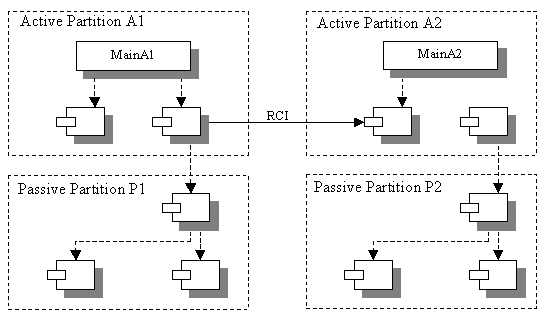[ Table of Contents ] [ Prev ] [ Chapter Overview ] [ Next ] [ Glossary/Index ]
In Ada a program can be composed of a set of partitions,
which execute in parallel and run on separate processors. Programmers can assign
library units to partitions. There are two kinds of partitions: active and passive, as
defined in the "Distributed Systems" special needs annex, Annex E of [ARM95]. A
passive partition does not have its own independent thread of control.
A module within an active partition can issue a procedure call to a module in another
partition, using a Remote_Call_Interface
(RCI) mechanism, as illustrated in the following diagram. This is a rather advanced topic,
and this capability is available only with compilers that conform to Annex E.
| The four dashed boxes in this diagram represent partitions, two active
partitions and two passive partitions. Each active partition has a main procedure. The
arrow labeled RCI represents a remote call interface between elements of the active
partitions. |

|
We do not provide a coded illustration of partitions and a distributed system in this
introductory volume.
Related Topics
[ Back to top of page ] [ Prev ] [ Next ]
